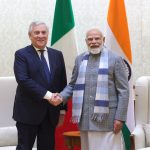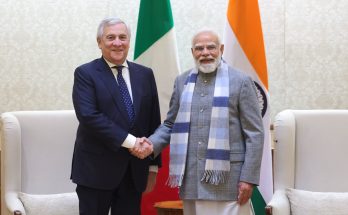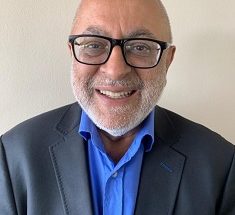By Manish Chand
The annual India-Russia summit in New Delhi on December 6 culminated in new defence deals and more than two dozen pacts in diverse areas. On the sidelines, Russian Foreign Minister Sergei Lavrov hailed the S-400 air defence missile systems deal with India, and openly accused the United States of undermining the India-Russia cooperation and “to make India obey the American orders.” The Delhi-Moscow bonhomie was closely watched in Washington, with a distinct sense of unease about the impact the S-400 deal may have on the India-US relations. In this wide-ranging interview with Manish Chand, Founder-CEO and Editor-in-Chief, India Writes Network and India and The World, Dr Mukesh Aghi, President & Chief Executive Officer of the US-India Strategic Partnership Forum, says that the US won’t impose sanctions on India under CAATSA for the S-400 deal as such a step can set India-US partnership by decades and will only benefit the US’ key adversaries, US and Russia. Mr Aghi also spoke about the likely agenda for the 2+2 dialogue between the foreign and defence partners of India and US and the future trajectory of the India-US economic partnership.
(Excerpts from the interview)
Q) From the India-US economic perspective, there is some good news. The meeting between Commerce and Industry Minister Piyush Goyal and US Trade Representative Katherine Tai resulted in the revival of the India-US Trade Policy Forum. To what extent do you think this revival will help reboot the larger economic relationship?
A) Now we have a platform, a platform where you can put up the issues and have a candid discussion. There’s a process now. If you have lawyers and bureaucrats who focus on commas and semi colons in an agreement, then you will not get a trade deal. We’ve been talking between the US and India for the last 20 plus years, and the same issues continue to persist. And we keep on adding more issues like GSP withdrawal. We have to think out of the box to move the India-US economic partnership to a higher plateau.
Q) What about prospects of more American FDI coming into India? Do you think now American businesses are responding better to India’s investment climate?

A) There are three factors at play here. First, China has become a risk factor. Companies are saying – where is my China plus one strategy? Second, India has made a lot of effort in improving the ease of doing business, making India a better investment destination itself. Schemes like Production-linked Incentive (PLI) are encouraging US companies to look at India afresh. Third, there is abundance of capital in the US. The capital cost is almost zero now in the US. The combination of all three things is driving more FDI into India. If you talk to investors in America, the interest in India is extremely high. The Indian economy is growing. They want to be part of this resurgent economy.
Q) What’s the status of India-US FTA negotiations? Do you think that is moving forward?
A) We have started the process. But the question is, do we want to try to boil the ocean? Or do we want to say – let’s take small bites, and leave them chewable and go to the next bite and next bite. To me, that could be a better approach than trying to boil the ocean.
Q) India and the US were planning to have 2+2 dialogue between their foreign and defence ministers. It seems it’s now postponed to January next year. What will be key issues on the agenda?
A) The 2+2 will focus more on geopolitical issues. It’s going to be strategic. The two sides will definitely talk about China, Afghanistan, terrorism, cybersecurity and defense cooperation between two countries.
Q) Do you have a wish list for the 2+2 dialogue?
A) Our wish list is we should look at the Quad more. Let’s look at how we basically drive an economic agenda under the Quad umbrella. If you look at the combined GDP of the four Quad countries, it’s over 32 trillion dollars. India needs at least one-and-a-half trillion-dollar worth of infrastructure investment. There is a lot of synergy between the two countries. Japan has the funding and the knowhow. Australia has high-tech environment. If the Quad focuses on its economic agenda, it will bring enormous benefits to the world.
Q) The Omicron variant has revived fears of a return of the coronavirus pandemic. India and the US have been collaborating in the post-pandemic recovery and in mitigating the pandemic. Going forward, how do you see the India-US counter-pandemic collaboration?
A) Whatever early information we have about the variant is that it is much more transmissive, but it is less pathogenic. So that means you can get it just like a common cold. You don’t have to be necessarily hospitalized. We don’t need to panic about it. Yes, governments have reacted – Israel closed its borders, Japan closed its borders, and every country is putting restrictions on travelers coming in. Yes, we have to control it. But this omicron is not as lethal as the Delta variant has been.
One has to understand that economies flourish because consumers have confidence. And if you take away that confidence, and create the uncertainties, then economies suffer. It’s, therefore, important for the government, India and the US to bring in the sense of confidence that we have enough wherewithal to manage this if it becomes another pandemic. I will say that we shouldn’t be too concerned, but there should be more collaboration. The bigger area of collaboration in this area would be on vaccines. India has the capacity and the capability to make vaccine in volume and at a cheap price. That’s where the US has to leverage India because unless you vaccinate the world, this virus is not going to go away.
Q) Prime Minister Modi has been talking about vaccine equity. And there is such a gap between the vaccinated and unvaccinated. Africa, for example, does not even have 10% of its people vaccinated. Do you think India and US can collaborate in pandemic mitigation and vaccines in third countries?
A) That’s where the Quad comes in. In the Quad, you have the Japanese who are willing to fund, we have Indians who can manufacture and the Americans who can provide the IP , and the Australians who can help in the supply chain. You can see Quad stepping up collaboration in the field of vaccines. But going beyond that, why not Africa? Why not other parts of the world? We will see better collaboration taking place; the world now realizes that unless you vaccinate everybody, this will keep on recurring.
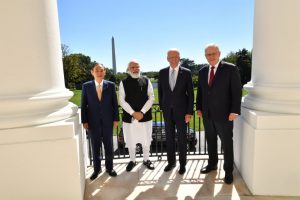
Q) You are here in India at a time when we just had the India-Russia annual summit where India and Russia concluded quite a few defense deals, including one $700 million deal for jointly making assault rifles. Russian foreign minister Sergei Lavrov took a dig at the US and accused it of undermining the S-400 deal. Do you see S-400 deal attracting the US sanctions under CAATSA?
A) I think it’s in the interest of Russia that the Countering America’s Adversaries Through Sanctions Act (CAATSA) is imposed on India. It is in the interest of China that CAATSA is imposed on India. For (Russian Foreign Minister Sergei) Lavrov to proactively poke at the United States in a summit with India was undiplomatic. The relation between India and the US is not at the cost of relations between Russia and India as long as it is not at the cost of USA.
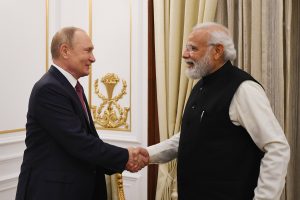
It’s important to understand that India maintains its strategic independence here. Now, if CAATSA is imposed, my position is that India is a sovereign nation. It has the right to decide what equipment it buys and from whom. And at the same time, if we look at S-400 pointed more toward China than anybody else, then it only serves interest of the US. From this perspective, I don’t think the Biden administration will impose CAATSA sanction on India for S-400 purchase. If at all sanctions are applied, it will set the US-India relationship by a few decades.
Q) So, it’s in the larger interest of the US and given the broad bipartisan consensus on sustaining the momentum in relations, it is extremely unlikely that they would contemplate such a move.
A) Absolutely.
Q) Ten months hence, how do you look at the quality of the India-US relationship under President Biden. In Donald Trump, we had a mercurial politician who was prone to all kinds of theatrics. Do you think now there is more stability in the partnership?
A: There is more maturity in the India-US relationship; there is more predictability and there is a sense of a consultative process between the two countries. Above all, there is an acceptance that the two sides may have different viewpoints in some areas, and there is respect for that. Now, we don’t have transactional issues like Harley Davidson coming in the way.
Broadly speaking, the Biden administration is taking a much more structured approach to dealing with India than the Trump administration, which was very transactional. So now, they are putting all the bricks together in areas ranging from healthcare to technology. I am very optimistic and see the India-US relationship going further, higher and deeper in every aspect.
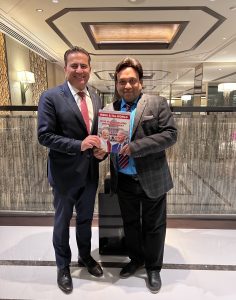
(Manish Chand is Founder-CEO of India Writes Network, India and the World magazine and Centre for Global India Insights, a think tank focused on global affairs.)
Author Profile

- Manish Chand is Founder and Editor-in-Chief of India Writes Network (www.indiawrites.org) and India and World, a pioneering magazine focused on international affairs. He is CEO, Centre for Global India Insights, an India-based think tank focused on global affairs.
Latest entries
 India and the WorldDecember 12, 2025India-Italy bonding: Tajani’s visit raises the bar for business, maritime ties
India and the WorldDecember 12, 2025India-Italy bonding: Tajani’s visit raises the bar for business, maritime ties In ConversationNovember 26, 2025G20 is a Force for global Good
In ConversationNovember 26, 2025G20 is a Force for global Good articlesNovember 26, 2025Rescuing G20 from North-South divide: Ubuntu Moment
articlesNovember 26, 2025Rescuing G20 from North-South divide: Ubuntu Moment India and the WorldOctober 27, 2025Modi hails the century of India and ASEAN, backs ASEAN centrality
India and the WorldOctober 27, 2025Modi hails the century of India and ASEAN, backs ASEAN centrality

